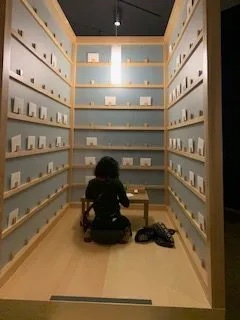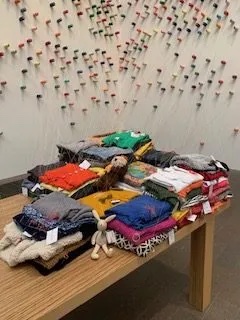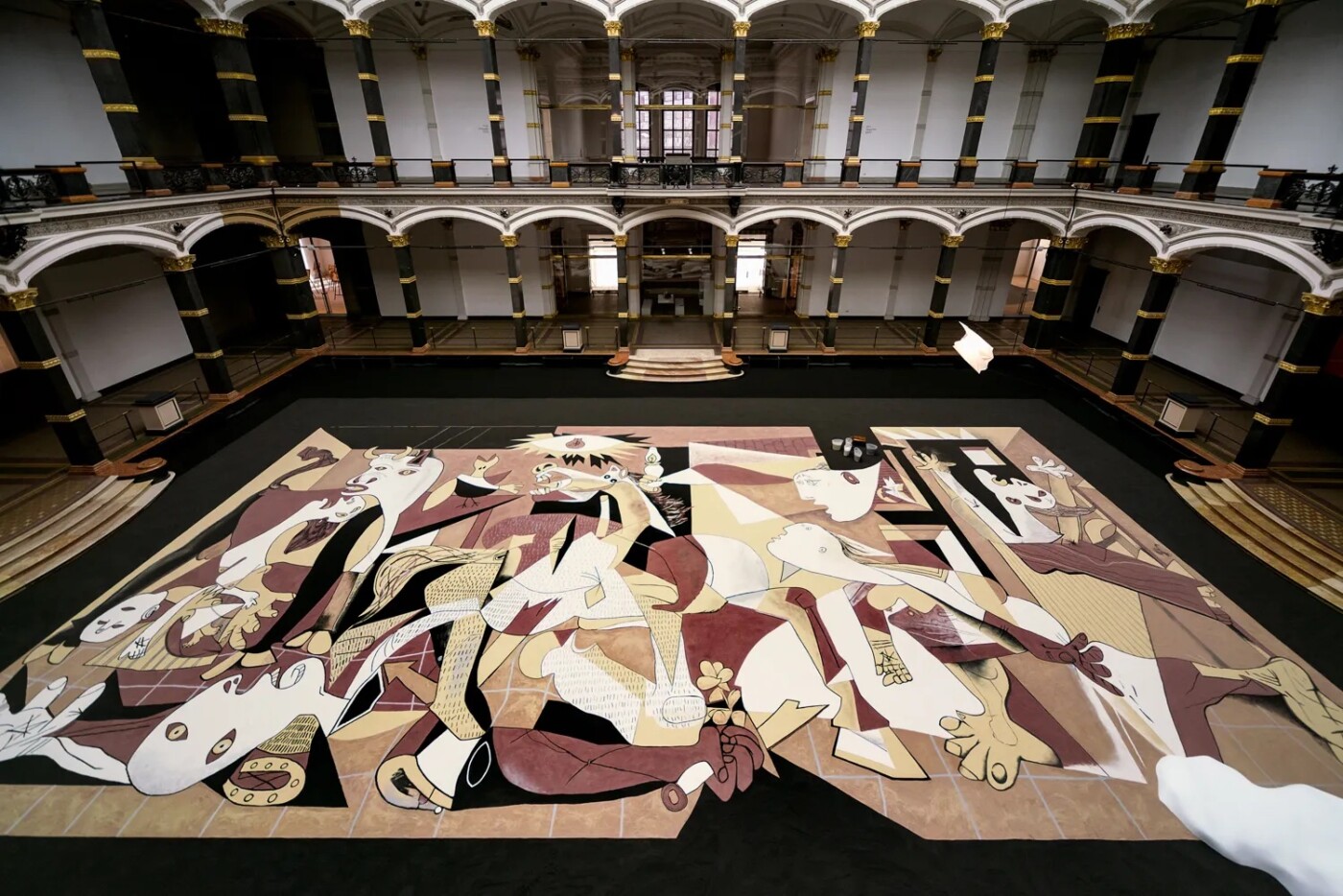“Lee Mingwei: Rituals of Care” at the de Young Museum in San Francisco marks the first American survey of work by the Taiwanese-born, American-educated artist internationally known for creative performances and interactive installations.
On view through July 7, the exhibition includes seven sections in which Lee Mingwei transforms everyday acts into rituals intended to enrich, support and heal visitors.
The works often spring from fears and threats experienced on a personal or global level, which are shaped into what Fine Arts Museums of San Francisco Director Thomas Campbell calls acts of “trust, healing and mindfulness.”
“Rituals of Care,” organized by FAMSF contemporary art curator Claudia Schmuckli and associate curator Janna Keegan, features varied works made over a number of years on view on the museum’s first and second floors.

Lee Mingwei documents the life cycle of a flower in “100 Days with Lily.” (Courtesy Hilda Scheib) 
“The Letter Writing Project” is among the evocative installations in “Lee Mingwei: Rituals of Care” at the de Young Museum. (Courtesy Hilda Scheib)
“Guernica in Sand” (2006 to the present), a recreation of Pablo Picasso’s haunting 1937 painting depicting the horrors of war in general and the Spanish Civil War in particular, is in the museum’s Great Hall. Created during the Iraqi civil war, Lee Mingwei’s “Guernica” is made entirely of colored sand. In the tradition of Buddhist mandalas, on March 23, in a one-time performance, the work will be destroyed when the artist and guests sweep the sand into the center of the piece, leaving it in the deconstructed state until it is cleared away on March 31.
“The Letter Writing Project” (1998), based on the artist’s feelings about his deceased maternal grandmother, invites patrons to compose letters they meant to send, but did not. The installation has identical three-sided booths, with a small writing table and wall brackets for holding completed letters. The museum will mail addressed letters, and unsealed letters are available for others to read. On opening weekend, it was moving to see how guests, including many young people entering the booths by themselves, in couples or in groups, responded to the opportunity. All were engaged in an ordinary activity Lee Mingwei adroitly elevated to a particularly meaningful ritual.
In “100 Days with Lily,” a project dating from graduate school days, Lee Mingwei documented about three months he spent raising a narcissus plant. With superimposed text describing his daily schedule (“eating with Lily,” “walking with Lily”) on oversized photographs of the flower in its various phases, from a seed until its demise, the work aims to reveal the importance of social connections and caregiving.

In “The Mending Project” (2009 to present), museumgoers’ torn clothing or cloth objects are repaired by volunteers practicing Japanese textile techniques called boro and sashiko in which the tear or hole in the fabric is embellished. During a recent visit, a pile of neatly folded items needing fixing included jeans, sweaters, dresses and children’s stuffed animals.
“Our Peaceable Kingdom” collects reinterpreted versions of Quaker minister Edward Hicks’ 1833 folk painting “The Peaceable Kingdom” created by various artists at Lee Mingwei’s invitation. The paintings, placed on easels and accompanied by the artists’ biographies, are charming, idiosyncratic variations on the famed Biblical scene depicting the idyllic coexistence of people and animals. The installation invokes a movement for solutions toward peace via community.
Based on an action he took when his mother was recovering from surgery, Lee Mingwei’s “Sonic Blossom,” on the museum’s second floor, has a singer at a small podium offering a seated visitor in a select chair the gift of superbly performed lieder, or short poems in German set to music by Franz Schubert. Performances are slated for Feb. 23-25, March 14-17, April 25-28, May 16-19 and June 27-30.
Lee Mingwei’s most recent project, 2024’s “Chaque souffle une danse” (“Each Breath a Dance”), a FAMSF commission, explores the dangers inherent in the act of breathing, both in the medical context of COVID and the social manifestation of George Floyd’s murder, which resulted from lack of breath. In the performance installation, as part of his daily sunset meditation, Lee Mingwei takes contemplative breaths, which spread ink drops that have been placed on an alabaster slate. The physical installation will be view at the Minnesota Street Project in San Francisco April 5 through April 21; a film of the performance will be shown at the de Young from April 9 through July 7.
“Lee Mingwei: Rituals of Care” continues through July 7 at the de Young Museum, 50 Hagiwara Tea Garden Drive, San Francisco. Admission is $20 general; $17 senior; $11 student; free for ages 17 and younger at famsf.org.
